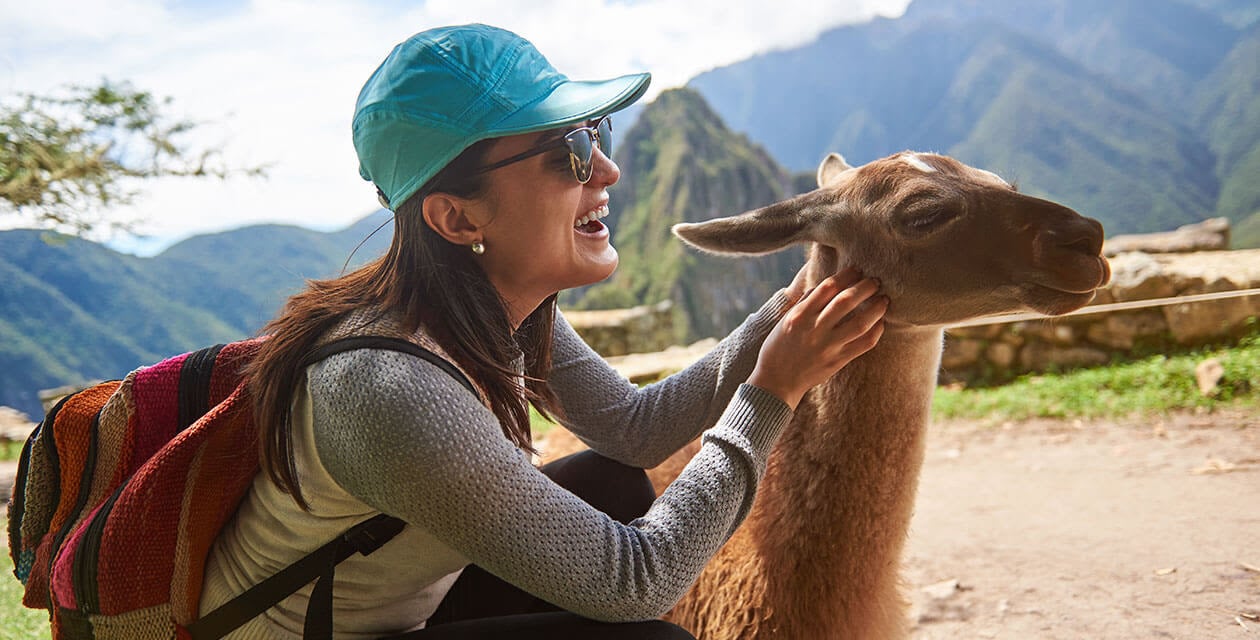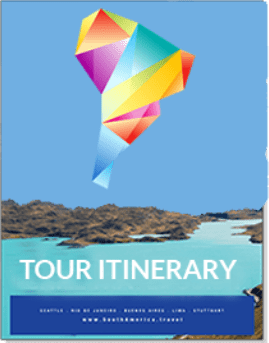

Peru Overview

Sinan Baysan
Peru Expert
History of Peru
Peru has been host to many ancient civilizations, dating back to more than thousands of years ago. Various cultures, such as the Paracas society and the Tiahuanaco culture, dominated areas of Peru. The civilization we hear the most about today is the Incan civilization. It wasn’t until 1500 that the Spanish had overthrown Cusco and taken over.
Once the Inca Empire was destroyed, Peru became a Spanish viceroy. Natives were made to work the land, work in the silver mines. If the work wasn’t tricky enough, disease plagued many, leading to the Spanish using African slaves. In the late 18th century, the natives were inspired by the Americans freeing themselves of the British. They were increasingly discontent with their Spanish rulers and decided to take action. In 1821, Peruvian independence was reached with the help of Chilean and Argentine troops.
Post-independence, Peru prospered. The first railway was built in 1851 and the African slaves were freed. The War of the Pacific in the late 18th-century (between Peru and Chile) ended in Peru’s defeat. For the next decade and a half, Peru was ruled over by the dictator General Andres Caceres. In 1885 Nicolas de Pierola led a successful revolution.


Peru Economy
For the past ten years, Peru has been the fastest growing economy in Latin America. The country has the world’s most significant silver reserves and Latin America’s most extensive gold, lead, and zinc resources.
The Peruvian coast is renowned for its marine resources and export-based agribusiness industry, including major products such as asparagus, blueberries, table grapes, avocados, organic bananas, and paprika. For its part, the Amazons have large reserves of oil and natural gas and abundant forestry resources.
The Peruvian government continues to implement measures to make the investment more manageable. They also encourage small businesses and continuously invest in infrastructure. Today, Peru enjoys trade agreements with the world’s leading economies, including the United States, China, and the European Union. It is also a member of trade blocs, including the Asia-Pacific Economic Cooperation Forum (APEC) Pacific Alliance and MERCOSUR.
Regions of Peru
Peru’s geographical location causes the country to experience 90 different microclimates. According to regions, it would not be easy to go over all of them, but here are the most common weather types.
The Coast of Peru
The coast of Peru is full of narrow deserts and fertile valleys neighboring the Pacific Ocean. The Northern coast is sunny all year round with an arid desert. Trujillo and Chan Chan are the most visited Peru towns due to their historical and archeological treasures.
Southern Peru
The Southern section is more temperate with little to no rain but plenty of cloudy days. Nazca Lines, Huacachina Oasis, Arequipa, and Colca Canyon are the most popular Peru destinations.
Peruvian Amazon
The Amazon Rainforest experiences hot and tropical weather, with plenty of rainfall during the wet season. While Iquitos is the central hub in the Northern Peruvian Amazons where you can take cruises, in the Southern Peruvian Amazons, Puerto Maldonado is a gateway to some of the nicest Peru Amazon Lodges.
The Highlands of Peru
The Andes highly dominates the Highlands of Peru’s mountainous region. The northern Andes are lower in altitude and tend to be more humid than the rest. The southern Andes are wider and higher in altitude. The perfect time to hike around the Andes is from April to October when the days are warm and there is very little rain.




Peru Environment
The 90 microclimates climates mentioned above and the rainforests that cover the south and the north make Peru one of the most diverse landscapes of any country in the world.
Given its varied landscapes, Peru’s weather can change vastly from one region to another. The best time to visit Peru certainly depends on where you’re traveling. The Peruvian coast is enjoyable in the summer months (Southern Hemisphere’s summer) from December to March. For travelers exploring the Andes Mountains, sunshine is enjoyed year-round. It is only from June to August when the temperature starts to drop. Additionally, the eastern rainforests are humid and warm year-round, with more precipitation from December to February.
Peru Wildlife
Wildlife and animals are abundant in Peru. Find 25,000 plant species and 5,000 species of fish and animals in the Peruvian Amazon and Manu National park (shared with Bolivia). In fact, in southeastern Peru, the Manu National Park recently set a biodiversity record with more than 1,000 species of birds, 1,200 species of butterflies, and 287 species of reptiles in the park.
Some of the cutest animals you’ll find in Peru are llamas and alpacas. These furry, wide smiling animals are one of the best photo opportunities while traveling throughout the country. Spot them at Machu Picchu, in the Sacred Valley, Cusco, and many more places. From the Pacific Coast to the Andean Mountains, Peru gives perfect opportunities to observe and experience the best wildlife.
Tourist Attractions in Peru
Peru is known for the incredible Machu Picchu; however, there are so many other tourist attractions in Peru. In fact, many don’t realize that there are other ancient ruins in Peru besides Machu Picchu. The country is home to more than 5000 archaeological sites. Like Machu Picchu, many other sites remain a mystery – why they were built, what they did there, and why they were abandoned. Travelers venture to Peru to gain answers or opinions to some of these questions. For example, a visit to Machu Picchu reveals the impressiveness of the Inca empire. Board a luxurious train to the sacred citadel, passing by gorgeous scenery and vibrant Andean villages.
Additionally, Peru is synonymous with natural beauty, and it is one of the world’s ten most biologically diverse countries. With more than 200 protected natural areas, it possesses 84 of the planet’s 117 life zones. Peru has created 14 national parks, 15 national reserves, 9 national sanctuaries, and 11 reserved zones. It is home to more than 1800 species of birds and 10% of all the reptile, mammal, and fish species on Earth.
It also has 3 500 varieties of orchids. Peru is also a paradise for lovers of nature and adventure. People come here to hike, trek, climb, surf, paraglide, camp, kayak, and more. These are just some of the most popular activities that form part of the host of possibilities offered by Peru’s varied geography.
Transportation in Peru
The country’s biggest cities have airports for domestic flights. In most cases the airport tax (TUUA) is included in the ticket price; in certain cases, the airline will tell you that you have to pay this tax before boarding the flight.
Peru’s main roads are in very good condition, patrolled by highway police, and with emergency services quickly available. Many bus companies operate almost everywhere in the country, with services varying by level of comfort, speed, and price. Most cities have bus terminals.
The most crucial tourist rail routes are:
- Ollantaytambo – Machu Picchu – Operator: Peru Rail and Inca Rail
- Cusco – Machu Picchu (Aguas Calientes) – Operator: Peru Rail
- Puno-Cusco – Operator: Peru Rail
Peru Culture
It’s impossible to understand Peru without learning about its past. While traveling here, discover the Inca empire, learn about the Quechua language, and travel to sites that offer a look into Peru’s history.
Like Brazil, Peru also is a melting pot of cultures. Immigrants from Africa, Japan, China, and Europe contributed to what makes up the society today. No matter the ethnic background, Peruvians agree on the importance of family and religion. Families live together, work together, and always help out during difficult times. In regards to religion, there is a church in every Peruvian city where a plaza resides. The majority of the country’s people practice Catholicism, Christianity, the Inca religion, or a mixture. Many national holidays and festivities have their origin in religious celebrations.
Additionally, Peruvians express their unique culture through music, art, dance, food, and more. The food and drink in Peru are delicious. Depending on the region you visit, you’ll experience different flavors and cooking techniques. In the Peruvian Amazon, expect fresh fish and fruit. In Lima, enjoy world-class service at some of the best restaurants in the world. Though, no matter where you are, you’ll see how the Peruvians use the ingredients from Andean cuisines, such as potatoes, meat, corn, and even cuy (guinea pig).
Thinking About Visiting Peru?
Contact a Peru Travel Expert
We Love to Talk About Vacation Ideas!
Thinking of traveling to South America? We take your South American travel dream and make it a reality. Every fully custom South America trip is planned by your own expert personal Travel Consultant.


















